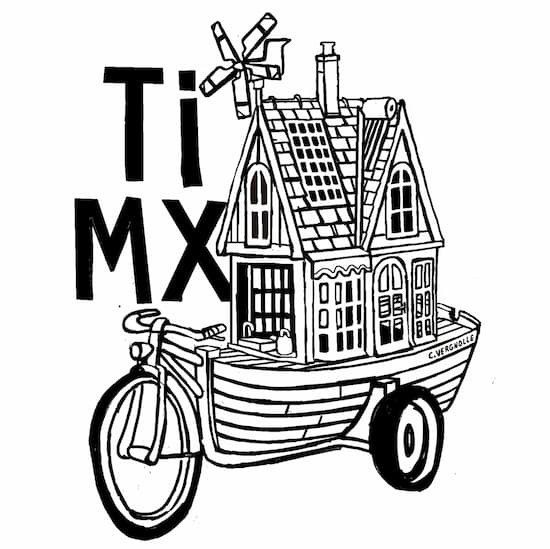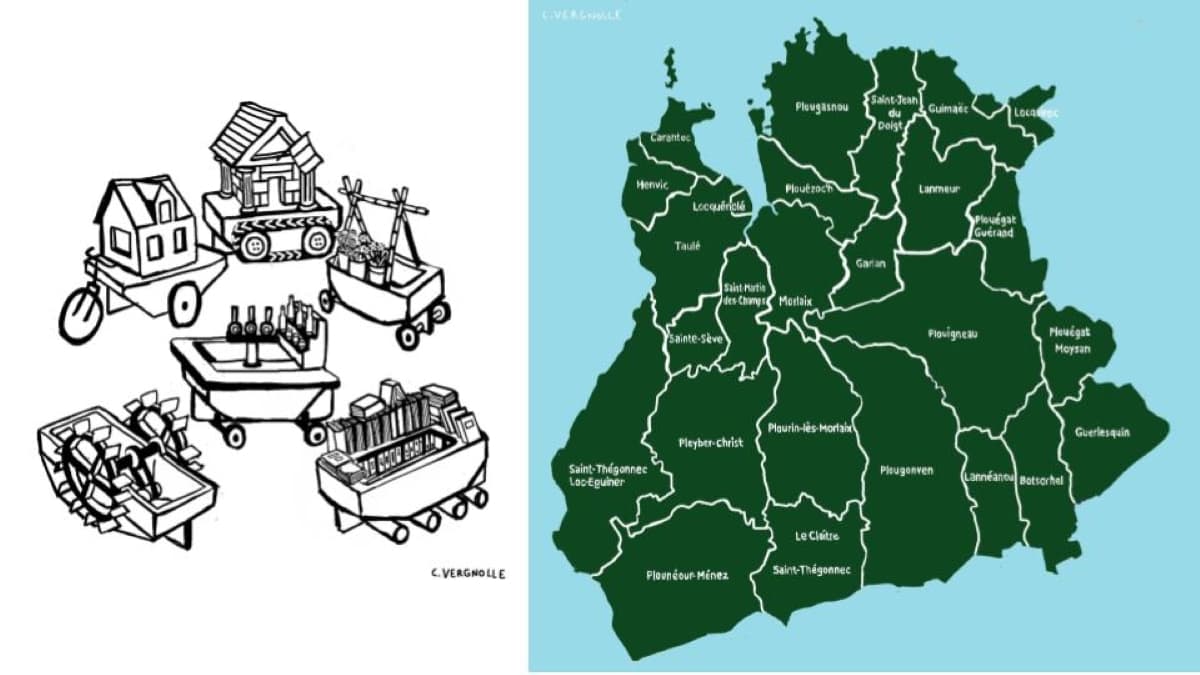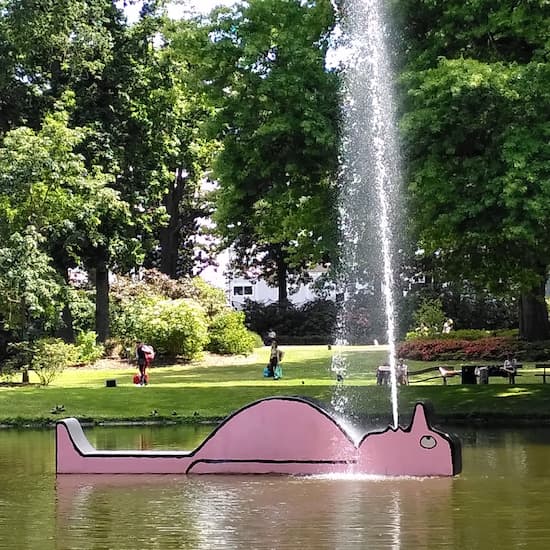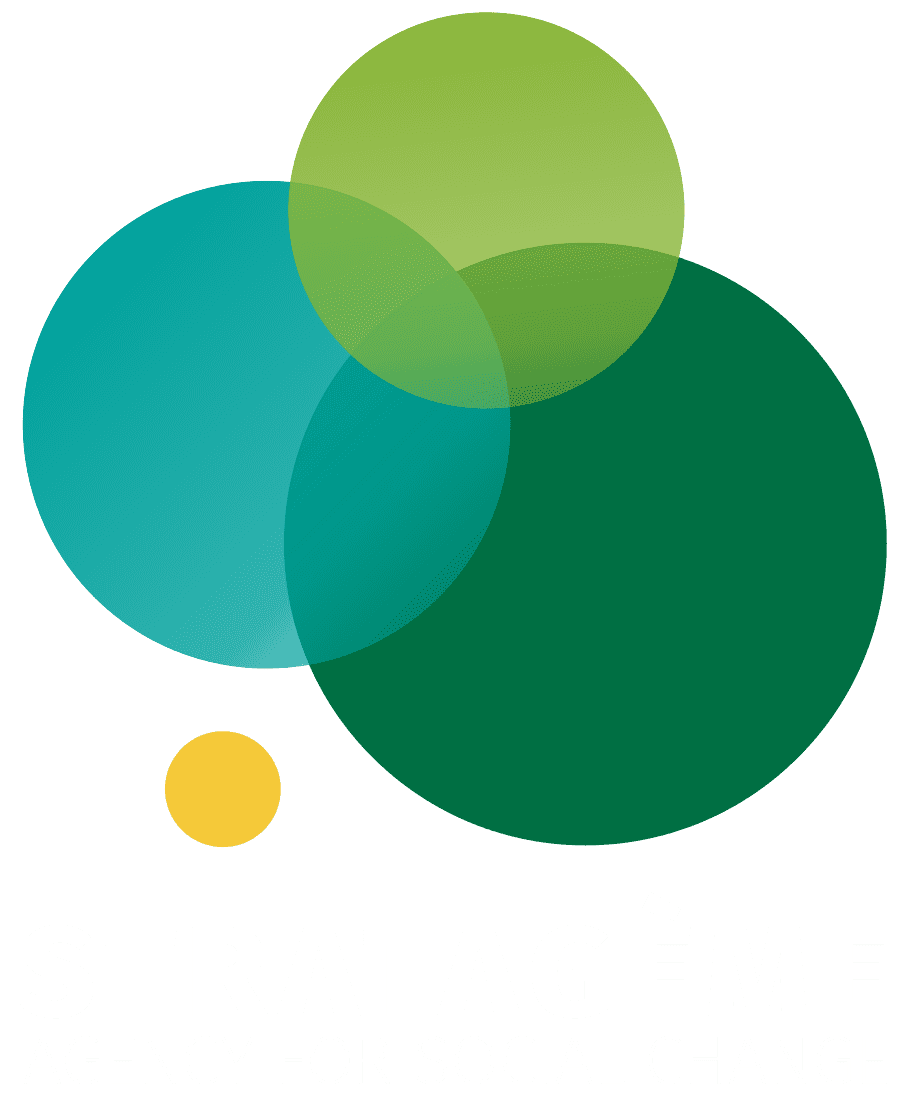Summary
Imagining regenerative retrofit
What if retrofitting our built environment became the foundation for a regenerative society? What if it brought to life a socially just circular economy around natural and reclaimed building materials? What if it became the mechanism to find our home in the right place? What if we came together around these complex issues and used our collective imagination to develop regenerative solutions, where we are with what we have and with the people that are present in our bioregion?

Over the course of a year a desire emerged to work on these questions in our local community - a medieval town, located in the boundary space between two territories each with their own cultural identities, nested between three hills, along a river nourished by two currents, in the space between land and sea in the northern part of Finistere, Brittany. Home to a dynamic mix of artists, writers, musicians, engaged citizens with opposing political views fervently voiced in the public space, it is a fertile soil for initiatives driving the social and ecological transitions.
A major challenge
Retrofitting our existing building stock is one of the greatest challenges of the ecological and social transitions.
In France, existing buildings represent nearly 30% of carbon emissions. The lack of thermal performance is impacting lower income residents in particular, with high energy bills in winter and overheating in summer. Surveys show a mismatch between the needs of households and the type of home they live in - too big, too small, in the wrong place. Rural property markets are under pressure from ‘city people’ looking for a countryside residence making homes increasingly unaffordable for local residents. Those committed to low carbon retrofit soon discover that beyond the technical and financial realm, they’re facing social questions such as their neighbours’ needs. Retrofitting a terraced house or an apartment is a higher order challenge, if not impossible, with too many parties to agree on a long-term investment. And we’ve yet to talk about availability of trades people and materials…
A question of community
The 'mismatch' between individual needs, geographical distribution and the need for retrofitting buildings touches on a number of dimensions.
It particularly concerns issues of social justice, finance, power relations, neighbourhood, ecological and social awareness, culture, belonging, habits and habitats, social and technical skills, building materials. A complex subject that goes to the heart of the values of our communities. A topic that invites us to imagine and define: How do we want to live - today and in the future? How can we use the universal need for connection as a lever for transformation around the issues of retrofit and placemaking? How can we come together in our communities to unlock this potential?
Looking for collaborators
At the time, our base was still in the UK, so how would we start the conversation with the community? How would we find collaborators?
Our first port of call was to launch invites in local facebook groups and via email to a number of local stakeholders such as municipal administration, political leaders, engaged citizens and associations. The result: a lot of positive feedback but no one volunteering to come on board. Except one. A local artist working with recycled material came back with a simple message: I’m in! Our first online meeting showed the importance of learning to go with the flow and to embrace the creative potential of differing perspectives and even misunderstandings.
Defining a project idea
The word ‘vehicle’ in the project invite had captured our new project partner’s mind. But their understanding was very different to what we originally had in mind.
The idea had been to engage in a prototyping programme using the tools of theory u, being clear about our intention and open about the result. However, the prospect of running a series of ‘collective intelligence workshops’ appeared entirely uninspiring to my project partner. Instead, they saw a clear need for a tangible project to engage local people. And so the idea for ‘Ti-MX’ was born: a tiny house that travels on land and water, entirely built from natural, re-use and waste materials available in the Pays de Morlaix, constructed in a collaborative effort by a diverse group of citizens and built environment professionals. Its mission: Inviting local neighbourhoods to connect around questions of their community and housing in particular.
Encouraging imagination
Our project idea intrigued several local councillors who joined us on a rainy Saturday afternoon in February 2022 alongside a small group of citizens.
A promising start which left us wondering: How to engage a wider circle of residents? How to tap into the creative potential of our communities? How to make visible the different ideas residents have of our ‘Ti-MX’? How to find out which materials are readily available? We decided to develop a short questionnaire asking simple questions: What does a simple, happy life mean to you? What would you need in a tiny house to live a comfortable life? What items do you throw away on a regular basis? If you imagined your home or business as a ‘Ti-MX’, what would it look like?
Territoire Ti-MX
How could we bring our project idea alive in a more tangible form, we wondered. What if we could create an entire village of Ti-MX models - a bakery, a hairdresser, a café, a corner shop?
What if these models could participate in a public rally to test their suitability for land and water use? What if we could organise exhibitions of these models in the different communities of the Pays de Morlaix? We invited a number of businesses and organisations to imagine and build their activity as a tiny house that rolls and floats. Over the course of the past year a number of these models have been build, which are visible at Ti-MX.bzh.

Our progress is slow but the journey continues. What stands out is the importance of holding space for each other and the communities around us. Focus on intention over particular actions. Accept that things take longer. Overcome our inhibitions to engage with those outside our usual spheres. Experiment and accept failure. Abandon our own ideas, let people express themselves. Acknowledge our limitations (time, money, outreach) and still keep going. Watch this space to follow the journey.
Role
We co-initiated the idea and are continuing to develop the project and its team of volunteers.
Equipment
- Stakeholder Engagement
- Workshops
- Action Research
Collaborators
Last adventures

Windows for a low-carbon future
What if we could make better homes with affordable windows made by local people using wood? What if joinery businesses, suppliers and clients came together to get there?
Learn more
Make room for nature
What if we made ourselves aware of how we relate to the world? What if this helped us change our posture and our practice? What if we used the opportunity to present in a professional setting as a space for contemplation?
Learn more